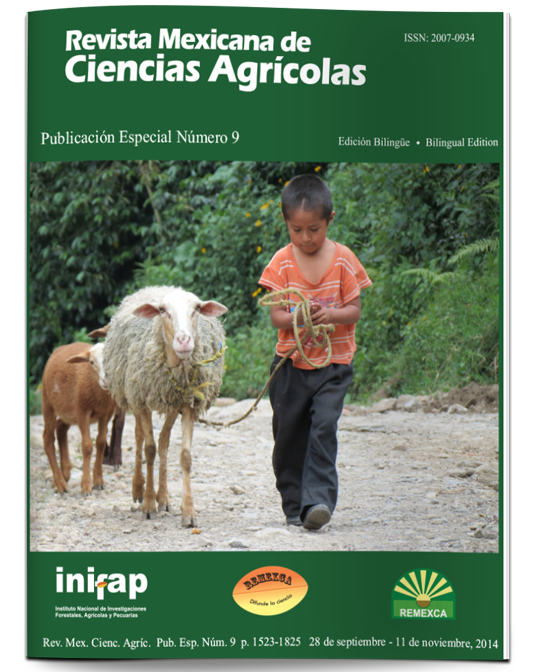Secondary metabolites and chlorophyll in cempasúchil in response to salinity stress
DOI:
https://doi.org/10.29312/remexca.v0i9.1050Keywords:
essential oils, carotenoids, chlorophyll, flavonoidsAbstract
Biotic and abiotic stresses factors inf luence the biosynthesis of secondary metabolites in some medicinal species. In this regard, it has been reported that salinity stress disrupts the biochemical properties of a large number of crops. In this context, this study aimed to evaluate the effect of treatments of two NaCl levels (10 and 47 mM) added to the nutrient solution that would cause to cempasúchil (Tagetes erecta Linn) var. Inca in flowering stage. The concentration of carotenoids and f lavonoids was evaluated in f lowers. In leaves, flowers, stems and roots identification of essential oils was made and a qualitative quantification of these was done. In the leaves, the concentration of chlorophyll a, b and total was determined. The high concentration of NaCl tested, reduced by 26.7 and 27.9% carotenoid concentrations and total f lavonoids in f lowers. The concentrations of chlorophyll a and total were not affected by salinity; while the concentration ofchlorophyllbwasincreasedsignificantlywiththesupplyof 47 mM NaCl. Seven essential oil constituents were identified from leaves of plants treated with 10 mM NaCl; while only four, when NaCl concentration increased; conversely, a larger number of compounds were identified in stems and roots with 47 mM NaCl. The presence of farnesene in f lowers is noteworthy, only with the level of NaCl supplied.
Downloads
Downloads
Published
How to Cite
Issue
Section
License
The authors who publish in Revista Mexicana de Ciencias Agrícolas accept the following conditions:
In accordance with copyright laws, Revista Mexicana de Ciencias Agrícolas recognizes and respects the authors’ moral right and ownership of property rights which will be transferred to the journal for dissemination in open access. Invariably, all the authors have to sign a letter of transfer of property rights and of originality of the article to Instituto Nacional de Investigaciones Forestales, Agrícolas y Pecuarias (INIFAP) [National Institute of Forestry, Agricultural and Livestock Research]. The author(s) must pay a fee for the reception of articles before proceeding to editorial review.
All the texts published by Revista Mexicana de Ciencias Agrícolas —with no exception— are distributed under a Creative Commons License Attribution-NonCommercial 4.0 International (CC BY-NC 4.0), which allows third parties to use the publication as long as the work’s authorship and its first publication in this journal are mentioned.
The author(s) can enter into independent and additional contractual agreements for the nonexclusive distribution of the version of the article published in Revista Mexicana de Ciencias Agrícolas (for example include it into an institutional repository or publish it in a book) as long as it is clearly and explicitly indicated that the work was published for the first time in Revista Mexicana de Ciencias Agrícolas.
For all the above, the authors shall send the Letter-transfer of Property Rights for the first publication duly filled in and signed by the author(s). This form must be sent as a PDF file to: revista_atm@yahoo.com.mx; cienciasagricola@inifap.gob.mx; remexca2017@gmail.
This work is licensed under a Creative Commons Attribution-Noncommercial 4.0 International license.



